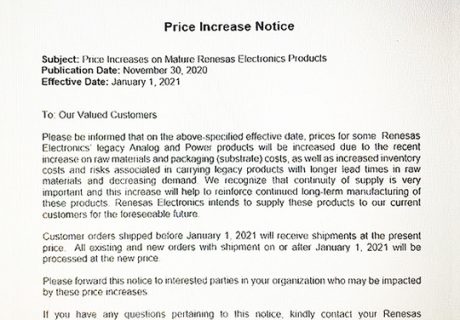In October 2016, wireless chip giant Qualcomm announced that it intended to acquire fellow chip maker NXP Semiconductors.
At the time, Qualcomm said the deal would boost the company’s serviceable addressable markets by around 40%, add “significantly” to the company’s non-GAAP earnings, and expand Qualcomm’s presence “across key growth opportunities: automotive, Internet of Things, security, and networking.”
Unfortunately for Qualcomm, it wasn’t able to secure regulatory approval from the Chinese government in a timely manner, and in late July, the company announced that it would scrap the deal.
Moving on with life
During Qualcomm’s July 25 earnings conference call, CEO Steven Mollenkopf explained the company’s rationale for giving up on the NXP Semiconductors transaction.
First, Mollenkopf stated that the current economic environment “was a very difficult macro-environment to get something of this size through,” adding that “it was not clear that was going to change in the future dramatically, particularly in the time window that we saw that we really had to move.”
The executive then said that Qualcomm needs to “focus on the opportunities that are ahead.” Additionally, Mollenkopf indicated that Qualcomm needs to “provide certainty, not only to our partners and shareholders, but to [our] employees as to where we’re going…And we looked at that all together in a big mix and basically decided that the right thing to do was to move on.”
A termination fee and a very large buyback
In its press release formally announcing the nixing of the deal on July 26, Qualcomm stated that it would be paying NXP Semiconductors a $2 billion deal breakup fee the same day. As Investopedia explains, a breakup fee “is used in takeover agreements as leverage on the seller against backing out of the deal to sell to the purchaser” and “is required to compensate the prospective purchaser for the time and resources used to facilitate the deal.”
What’s probably worth paying more attention to is that Qualcomm also announced in the press release that it would be buying back a lot of its own stock.
The deal-shelving announcement informed investors that the company’s board has issued a new $30 billion stock repurchase authorization. The $30 billion program, the company said, will supplant the existing $10 billion program its board had previously authorized.
That buyback is set to happen at a rapid pace, with Mollenkopf noting that the company aims “to execute on a large majority of the authorization by the end of fiscal [year] 2019.”
The reasoning behind the buyback seems simple enough: Qualcomm had hoped that its purchase of NXP would help it boost its earnings per share significantly. Now that the deal has fallen through, Qualcomm is going to try to boost its earnings per share another way — by significantly reducing the total number of its shares in the market.
Putting it into perspective
As of Qualcomm’s most recent earnings release, the company’s diluted share count was 1.487 billion. Stock prices fluctuate, but as of this writing, the stock most recently closed at $65.40 per share. This means that Qualcomm’s $30 billion share repurchase program could acquire around 458.7 million shares.
To illustrate the potential boost this buyback program can provide to Qualcomm’s earnings per share, observe that Qualcomm generated $1.219 billion in net income last quarter. If we take that $1.219 billion and divide it by 1.487 billion, we get an earnings per share figure of roughly $0.82 — exactly what Qualcomm reported.
Subtract 458.7 million shares from Qualcomm’s share count and we get a new share count of 1.03 billion. Take that very same net income of $1.219 billion but divide it by the much lower share count, and earnings per share reach nearly $1.19. That’s a 45% increase in earnings per share from the very same net income. From this hypothetical example, we can see that future earnings will get a lift once the massive share repurchase program is completed.
NXP Semiconductors is not on our top “Buy” list, but these 10 stocks are
Investing geniuses David and Tom Gardner just released their best stocks to buy now — and it could pay to listen. Especially when you consider their average stock pick is up 353% vs. a mere 81% for the S&P 500.
They just shared what they think are the ten best stocks for investors to buy right now to members inside their service Motley Fool Stock Advisor and NXP Semiconductors wasn’t one of them! That’s right — they think these 10 stocks are even better buys.
Related News:
China kills Qualcomm’s $44 billion deal for NXP
To Be Or Not To Be — Qualcomm and NXP



















